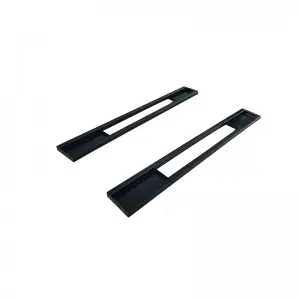****
Cylinders are among the most fundamental shapes in geometry and engineering, playing a crucial role in various aspects of science and technology. From everyday objects to complex engineering designs, the cylinder’s unique properties and characteristics make it a shape worth exploring in depth. A cylinder is defined as a three-dimensional solid that has two parallel bases connected by a curved surface at a fixed distance from the center of the bases. Typically, these bases are circular; however, the concept of a cylinder can be generalized to other shapes.
Understanding Cylinder Geometry
In mathematics, the cylinder can be classified into two main types: right cylinders and oblique cylinders. A right cylinder has vertical sides, meaning the bases are directly aligned one above the other, making it easy to calculate its surface area and volume. The formulas for a right circular cylinder, which is the most common type, can be expressed as follows:
– **Volume (V)** = πr²h
– **Surface Area (SA)** = 2πr(h + r)
Where `r` is the radius of the base, and `h` is the height of the cylinder. On the other hand, an oblique cylinder is one where the sides lean over, making the bases non-aligned. While the formulas for volume and surface area remain the same, visualizing these properties can be more challenging.

Exploring the Fascinating World of Cylinders: Their Properties, Applications, and Importance in Everyday Life
Applications of Cylinders in Real Life
Cylinders are ubiquitous in engineering, everyday objects, and natural formations. Here are some of the prominent applications:
1. **Barrels and Storage Containers**: Cylindrical shapes serve as effective containers due to their ability to hold large volumes while maintaining structural integrity. The shape allows even distribution of pressure when filled, making barrels ideal for liquids such as oil, water, and chemicals.
2. **Pipes and Tubes**: The cylindrical design is fundamental in plumbing and piping systems where fluids must flow from one point to another. The smooth surface and consistent cross-section of pipes ensure minimal resistance against fluid flow, which is vital in various engineering applications.
3. **Transportation**: Many vehicles are built with cylindrical components. For example, the engines often contain cylindrical casings that house pistons, allowing for efficient energy conversion and mechanical movement. Cyclinders can also be found in the production and design of bicycle tires, which help to maintain shape and balance during motion.
4. **Architecture**: The elegance of cylindrical structures can be seen in many buildings and infrastructure projects. Columns and pillars, which are often cylindrical, provide support while also contributing to aesthetics. The Parthenon in Athens and the Taj Mahal in India are prime examples of cylindrical architectural elements.

Exploring the Fascinating World of Cylinders: Their Properties, Applications, and Importance in Everyday Life
5. **Cylinders in Science**: In the field of physics and engineering, cylindrical shapes are fundamental in the design of objects such as rockets, where aerodynamics and efficiency are crucial. Cylindrical tanks are widely used in reactors and other processes in chemical engineering, highlighting the role of cylinders in various scientific applications.
The Importance of Cylinders in Nature

Exploring the Fascinating World of Cylinders: Their Properties, Applications, and Importance in Everyday Life
Natural formations often exhibit cylindrical characteristics. For instance, geological columns and stalactites found in caves often present cylindrical shapes, showcasing nature’s propensity to favor efficient geometric forms. Many trees can also be described as cylindrical, demonstrating the advantages of this shape in maximizing height and supporting biomass.
Conclusion
In conclusion, the cylinder is far more than just a mathematical shape; it is a fundamental element that permeates our lives in numerous ways. From practical applications in daily objects to significant roles in engineering, architecture, and nature, cylinders exemplify the balance of functionality and stability. Understanding the properties and applications of cylinders enriches our appreciation for geometry and its relevance in our daily experiences. With continued advancements in technology and materials science, the significance of cylinders is only set to grow, highlighting their importance and versatility in a myriad of fields. Whether it’s a simple water bottle or a complex engineering structure, we are surrounded by cylinders, making them an essential part of both our natural environment and modern innovations.New Engery Vehicle Battery Lift



